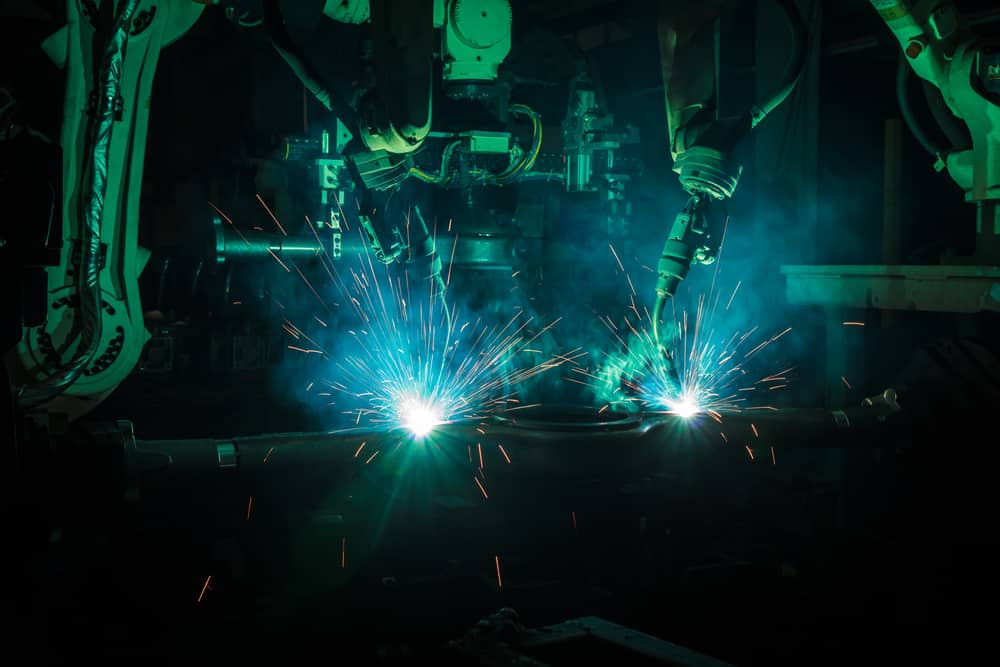
Invar, also known as Invar 36, FeNi36, or 64FeNi, is highly popular among semiconductor, aerospace, and information technology industries for its low thermal expansion coefficient. For this very reason, conventional welding of Invar is different from other metals and requires special considerations. Traditionally used to manufacture high-precision measurement devices, Invar is now sought-after for use with composite tools.
Here, we’ll discuss Invar’s unique properties and the challenges that can arise during the Invar welding procedure.
About Invar: Its Properties and Benefits for Industries
The origin of Invar dates to 1896 when Charles-Edouard Guillaume successfully experimented with many variations of nickel and iron to form this iron-nickel alloy at 36 percent nickel level. The discovery of Invar was so significant that it earned Guillaume the Nobel Prize in 1920.
Invar exhibits excellent properties and is famous for its dimensional stability across a wide temperature range. This lack of dimensional change with temperature also gives it the name “Invar,” which is short for “invariable.” Its near-zero expansion feature has allowed industries to use Invar as a component in manufacturing high-precision equipment such as bimetallic thermostats, mechanical clocks, seismic creep gauges, space equipment, level staffs, valves, and more. Invar also provides effective corrosion resistance, making it suitable for storage tanks and pipelines for liquified gas.
This austenitic alloy exhibits magnetic properties below its Curie point (536F for 36 percent nickel). Invar also possesses good strength, toughness, and a reasonable degree of corrosion resistance. The table below summarizes the mechanical properties of Invar.
| Density | 8100 kg/m3 |
| Tensile Strength | 445 MPa |
| Yield Strength | 280 MPa |
| Melting Point | 1687°C |
| Young’s Modulus of Elasticity | 135GPa |
| Thermal Conductivity | 12W/mK |
| Heat Capacity | 505J/gK |
| Elongation | >20% |
By considering these properties, manufacturers can develop effective Invar welding procedures.
Invar Welding: Procedures and Challenges
The weldability of Invar is unique when compared to metals like stainless steel. Although conventional methods can be applied when welding Invar, weld parameters should be perfectly analyzed and employed to create a pure and defect-free weld.
As a fully austenitic steel, Invar is highly susceptible to hot cracking or reheat cracking during welding. The overheating of the weld pool can cause the Invar to splatter the weld pool and create pits in the weld area and cracks during the solidification process. Other defects that can result from welding Invar include the presence of pores and inclusion in the weld. To mitigate these risks, operators should exercise caution to ensure accurate weld temperature. Many studies also suggest that the addition of titanium and manganese can improve the hot cracking susceptibility of Invar by increasing the melting point.
Traditionally, welding processes like GTAW (Gas Tungsten Arc Welding) have been used in welding procedures that require controlled heat input. The same process can be useful in Invar welding where low heat input can be introduced to a reduced heat-affected zone and decrease the chances for heat cracking. Furthermore, GTAW with adequate shielding can help reduce oxidization of Invar, a nickel alloy, during the welding process. By introducing an orbital welding process, manufacturers can improve speed, control, and precision—qualities desired when welding Invar.
Invar Welding Procedure to Ensure Quality
The popularity of Invar has been increasing as industries like aerospace and electronics adopt it for manufacturing their precision equipment. Its low coefficient of expansion, excellent corrosion resistance, high strength, and toughness are attributes that make Invar desirable by manufacturers. As a result, developing the Invar welding procedure has become a priority across industries. By identifying the ideal weld process, along with its challenges and best practices, manufacturers can utilize Invar safely and reliably to achieve the highest quality welds.
Arc Machines, Inc. has decades of experience creating high-quality, precision welds with advanced welding technology processes and equipment. Arc Machines welcomes the opportunity to discuss your specific Invar welding procedures and your welding needs. Contact us to arrange a meeting.




